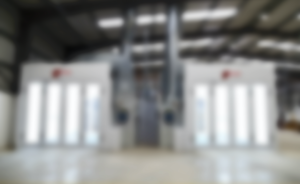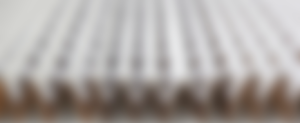The materials and processes used in plane construction
Have you ever wondered what goes into the manufacturing of the Boeing 787 you’re about to jump on for your next holiday across the big pond? Well, allow us to elaborate with our guide to the materials and processes used in plane construction.
At Junair, we provide paint finishing equipment solutions to an array of industries, including aerospace – so strap yourself in for a journey into the wonderful world of the aircraft!
Each vessel is different
Of course, Wizz Air and Aer Lingus might operate a smaller fleet and type of aircraft to cater for their domestic travel, so it’s important to keep in mind the differences with each aircraft when taking onboard this information.
So let’s dive into what materials are used to make a Boeing 787 and why they are so important to the construction of these vessels.
Aluminium not steel
Steel, as a material, can be brittle, heavy and easily broken down. That’s why something carrying a lot of weight or cargo, should use aluminium to build the outer – especially when it is airborne. As for our 787, there is about 10% of steel in the frame itself, this is usually within the primary landing gear.
Saving weight is a priority
Of course, aeroplane materials typically include both light and heavy components, owing to the fact that the plane must fly and hence cannot be composed of super-heavy metals. The body’s weight, in particular, must be kept to a minimum. That’s why manufacturers of aircraft use carbon fibre predominantly in the construction of larger vessels – in fact, almost half of the Boeing 787 is carbon fibre. When compared to more traditional (and outdated) aluminium designs, this material saves on average 20% of the weight.
The fuselage, or main body, of the plane, as well as sections of the wings and tail, are made of carbon fibre materials. In addition to fuel efficiency, Boeing points out that carbon and other composite materials require less maintenance because they do not corrode or fatigue like metals.
What is carbon fibre tape?
As well as carbon fibre being distributed throughout the construction of the aircraft itself, carbon fibre tape is another important element. Carbon fibre tapes are often utilised as a composite reinforcement or on the margins of composite elements.
In the Boeing 787, carbon fibre tape is 6.4mm wide and 0.2mm thick, and approximately 2,200 miles of carbon fibre is used in a single Boeing 787. Carbon fibre composites are extremely strong and stiff for their weight, so it’s no surprise that aircraft manufacturers are gravitating toward them.
Next to carbon fibre, around 76 miles of electrical wires go through a single 787. Parts get exported from Japan, South Korea, the USA and can take up a month in construction.
What about smaller aircrafts?
Interestingly, the earliest planes were rarely made out of materials such as steel and aluminium. Wilbur and Orville Wright were aviation pioneers and inventors from the United States. The Wright brothers achieved the first powered, sustained, and controlled aeroplane flight in 1903 with a pilot aboard; two years later, they built and flew the first entirely operational aeroplane.
Using a combination, the brothers built the first aeroplane out of woods, predominantly ash and spruce, and covered it in a muslin fabric once it was finished. Most older commercial planes are primarily composed of aluminium, but most newer planes are made of composite materials. A light alloy, such as titanium, can be used in military planes.
How we spray aircrafts at Junair
At Junair, air replacement systems, typically with variable heating, are available for the aerospace spray booth. We may also supply air handling solutions, such as humidification, chilling, dehumidification, and air filters, to ensure that the process has the required air quality. Find out more about our spray booth services and the industries that we work with at Junair. To provide the greatest quality air within the cabin, all our spray booths are equipped with high-efficiency intake filtration. To find out more, get in touch with a member of our team today.
Written by


